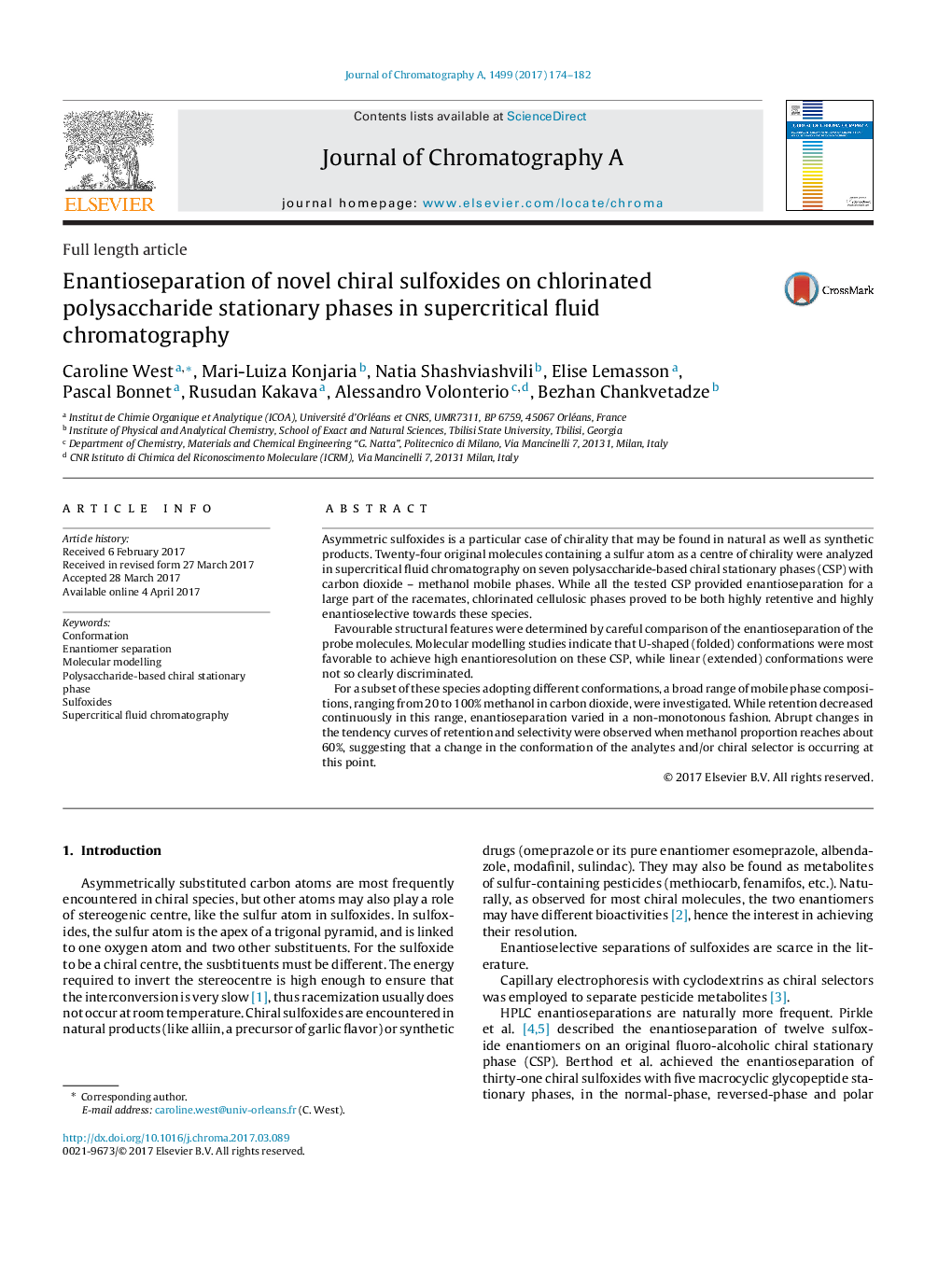| Article ID | Journal | Published Year | Pages | File Type |
|---|---|---|---|---|
| 5135178 | Journal of Chromatography A | 2017 | 9 Pages |
•Chlorinated polysaccharide-based stationary phases yield high retention and enantioseparation of sulfoxides.•Enantiorecognition is more favorable for folded analyte conformations than for linear conformations.•Stationary phase conformation changes significantly when methanol percentage reaches about 60%.
Asymmetric sulfoxides is a particular case of chirality that may be found in natural as well as synthetic products. Twenty-four original molecules containing a sulfur atom as a centre of chirality were analyzed in supercritical fluid chromatography on seven polysaccharide-based chiral stationary phases (CSP) with carbon dioxide – methanol mobile phases. While all the tested CSP provided enantioseparation for a large part of the racemates, chlorinated cellulosic phases proved to be both highly retentive and highly enantioselective towards these species.Favourable structural features were determined by careful comparison of the enantioseparation of the probe molecules. Molecular modelling studies indicate that U-shaped (folded) conformations were most favorable to achieve high enantioresolution on these CSP, while linear (extended) conformations were not so clearly discriminated.For a subset of these species adopting different conformations, a broad range of mobile phase compositions, ranging from 20 to 100% methanol in carbon dioxide, were investigated. While retention decreased continuously in this range, enantioseparation varied in a non-monotonous fashion. Abrupt changes in the tendency curves of retention and selectivity were observed when methanol proportion reaches about 60%, suggesting that a change in the conformation of the analytes and/or chiral selector is occurring at this point.
